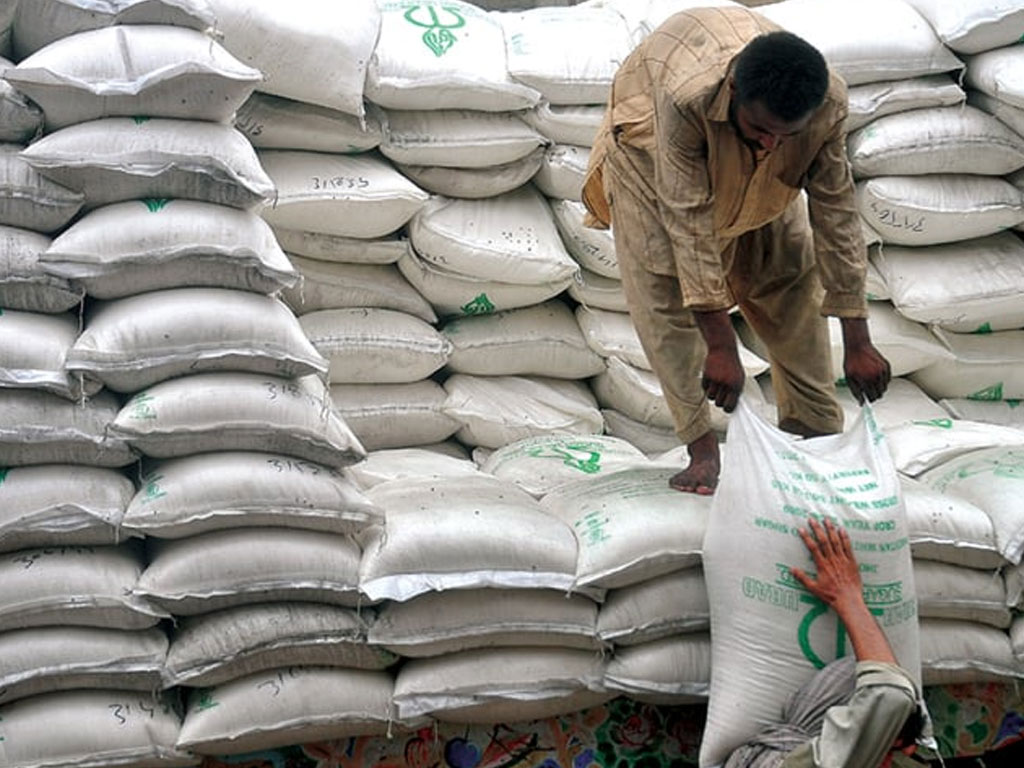To export sugar, look towards re-export

After exporting 2.3 million tons during the past 30 months, Pakistan has finally banned export of refined sugar. The ongoing shortfall of the sweetener in the domestic market is widely attributed to the exporter’s bonhomie, as retail price of sugar has risen by over 36 percent during the intervening period – to reach a decade-long high of Rs 75 per kg.
To the sugar industry, the matter is simply one of exportable surplus. Back in March 2017, the industry had closed its crushing season with stocks equivalent to 15.5 months of domestic consumption that ran retail prices into the ground.
Now that near-equilibrium has been restored to domestic supply – albeit at great fiscal cost – sugar milling is at the risk of being relegated once again to its domestic-centric status of the past. It remains protected from international competition thanks to prohibitive import duty of forty percent. And with no incentive to export, it appears that the gains made in production efficiency, higher yield, and improved sucrose recovery may be lost.
Then there is the protracted battle of sugarcane’s water footprint, which although misunderstood, has taken very strong roots in public and policymaking imagination. Thus, sugar export is held akin to virtual exporting of water, a subject that raises strong passions and leaves little room for informed conversation.
Does that mean the sun has set on Pakistan’s sweetener export? Look towards raw sugar. For a better part of last decade, global trade in sugar has averaged close to $25 billion. Of this, the two sugar giants Brazil and Thailand put together control more than 50 percent of market share, with rest of the world fighting over the remainder half with share equivalent to lose change.
But aggregates can be deceiving. Between 2016 and 2017, when Brazil exported $12 billion worth of cane sugar (HS code: 1701), share of its white crystalline refined sugar stood at just $2.2 billion. Brazil’s export-oriented industry instead thrives on exporting its surplus sugar in raw form, which is then processed into refined form close to eventual destinations.
While Brazil and Thailand dominate international trade, many other regions such as Australia, EU, India, and Mexico produce sugarcane in excess of domestic demand, only to export remainder to the rest of the world.
Three industry-specific factors play a critical role: first, raw material sugarcane requires tropical climate to give high yield and optimal sucrose quality, two, sugarcane is a high tonnage crop that cannot be exported in commodity form; and three, unlike rice or wheat milling, sugarcane crushing requires major capital expenditure which does not make economic sense unless the supply of raw material is stable and guaranteed.
How can a water-scarce economy struggling with intermittent shortages of the sweetener benefit from the raw sugar model? Enter re-exports. Consider that Pakistan has an installed capacity to process and produce 10-12 million tons of sugar annually; but given the agro-climatic bottleneck of increasing domestic sugarcane production, only produces 5-6 million tons of sugar on average. Domestic installed capacity remains highly under-utilized, with a further blow that average crushing seasons lasts no more than 100-120 days, leaving units closed for the remainder 300 days of the year.
Also consider that most of the arid and dry countries in Middle East, Africa, and Central Asia depend on imported sugar for domestic consumption, most of which is imported in raw form in regional hubs such as Dubai and then re-exported throughout the region.
Debating ad nauseum whether Pakistan is fit for sugarcane cultivation is surely one way to go; but over fifty percent surplus domestic capacity means that policymakers and the industry could explore converting Pakistan into a hub for raw sugar import with the objective to capture the re-export market of Middle East, Asia, and Africa.
Already, exports in the ongoing calendar year are set to suffer as import quota from China is expected to go unfulfilled due to shortage in domestic market. So long as export remains an arbitrary quota-driven market, domestic millers will also have little incentive to invest in efficiencies and become part of the global value chain. But that requires policymaking debate surrounding sugar industry to get out of its agro-favor mindset. Fingers crossed.























Comments
Comments are closed.